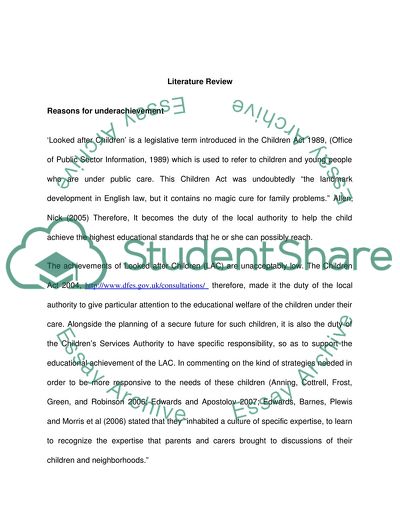Cite this document
(Safeguarding Looked After Children in Care Essay Example | Topics and Well Written Essays - 1250 words, n.d.)
Safeguarding Looked After Children in Care Essay Example | Topics and Well Written Essays - 1250 words. https://studentshare.org/law/1720257-safeguarding-looked-afterchildren-in-care-focusing-on-issues-around-under-acheiving-educationally-exclusion-in-schools
Safeguarding Looked After Children in Care Essay Example | Topics and Well Written Essays - 1250 words. https://studentshare.org/law/1720257-safeguarding-looked-afterchildren-in-care-focusing-on-issues-around-under-acheiving-educationally-exclusion-in-schools
(Safeguarding Looked After Children in Care Essay Example | Topics and Well Written Essays - 1250 Words)
Safeguarding Looked After Children in Care Essay Example | Topics and Well Written Essays - 1250 Words. https://studentshare.org/law/1720257-safeguarding-looked-afterchildren-in-care-focusing-on-issues-around-under-acheiving-educationally-exclusion-in-schools.
Safeguarding Looked After Children in Care Essay Example | Topics and Well Written Essays - 1250 Words. https://studentshare.org/law/1720257-safeguarding-looked-afterchildren-in-care-focusing-on-issues-around-under-acheiving-educationally-exclusion-in-schools.
“Safeguarding Looked After Children in Care Essay Example | Topics and Well Written Essays - 1250 Words”. https://studentshare.org/law/1720257-safeguarding-looked-afterchildren-in-care-focusing-on-issues-around-under-acheiving-educationally-exclusion-in-schools.


